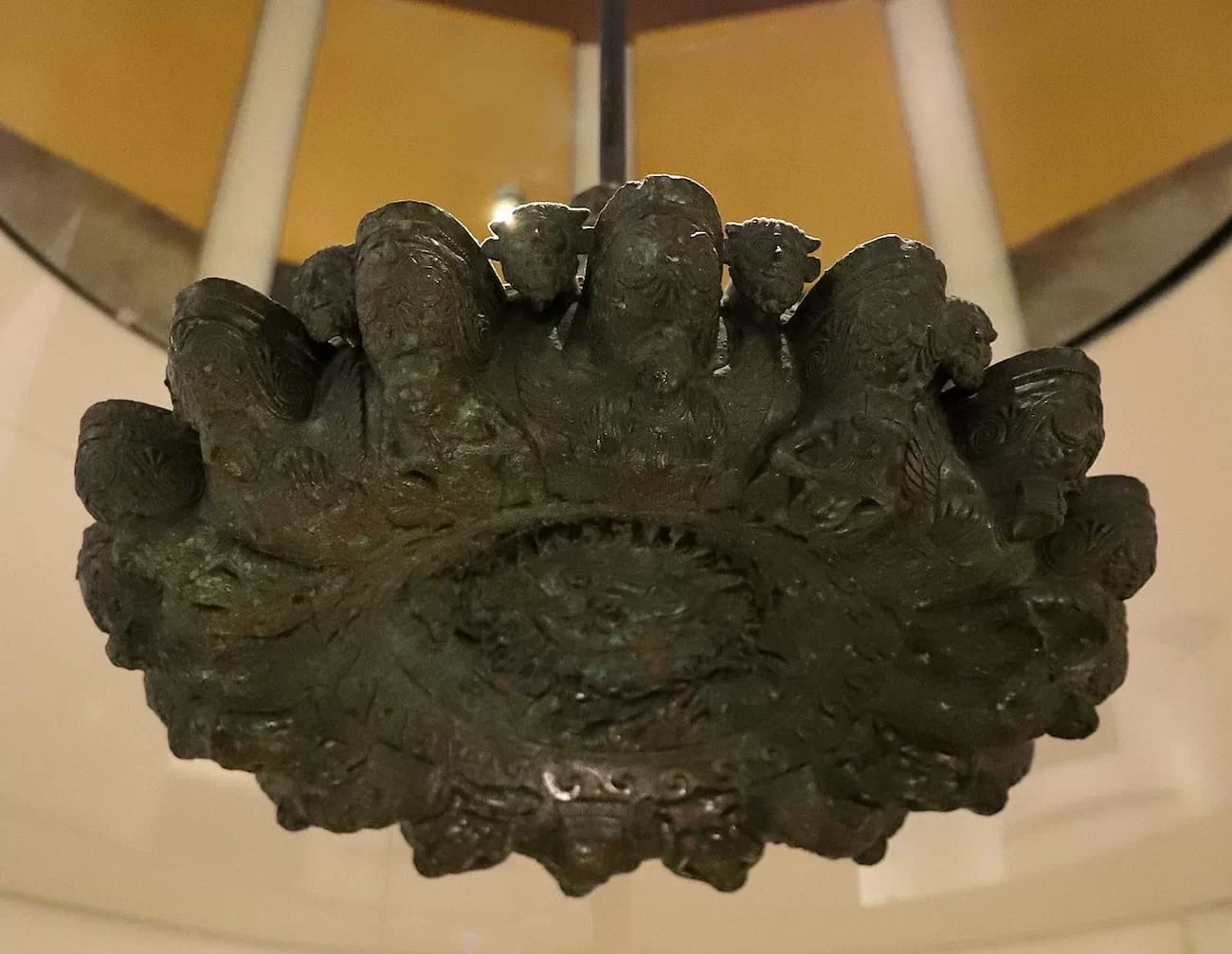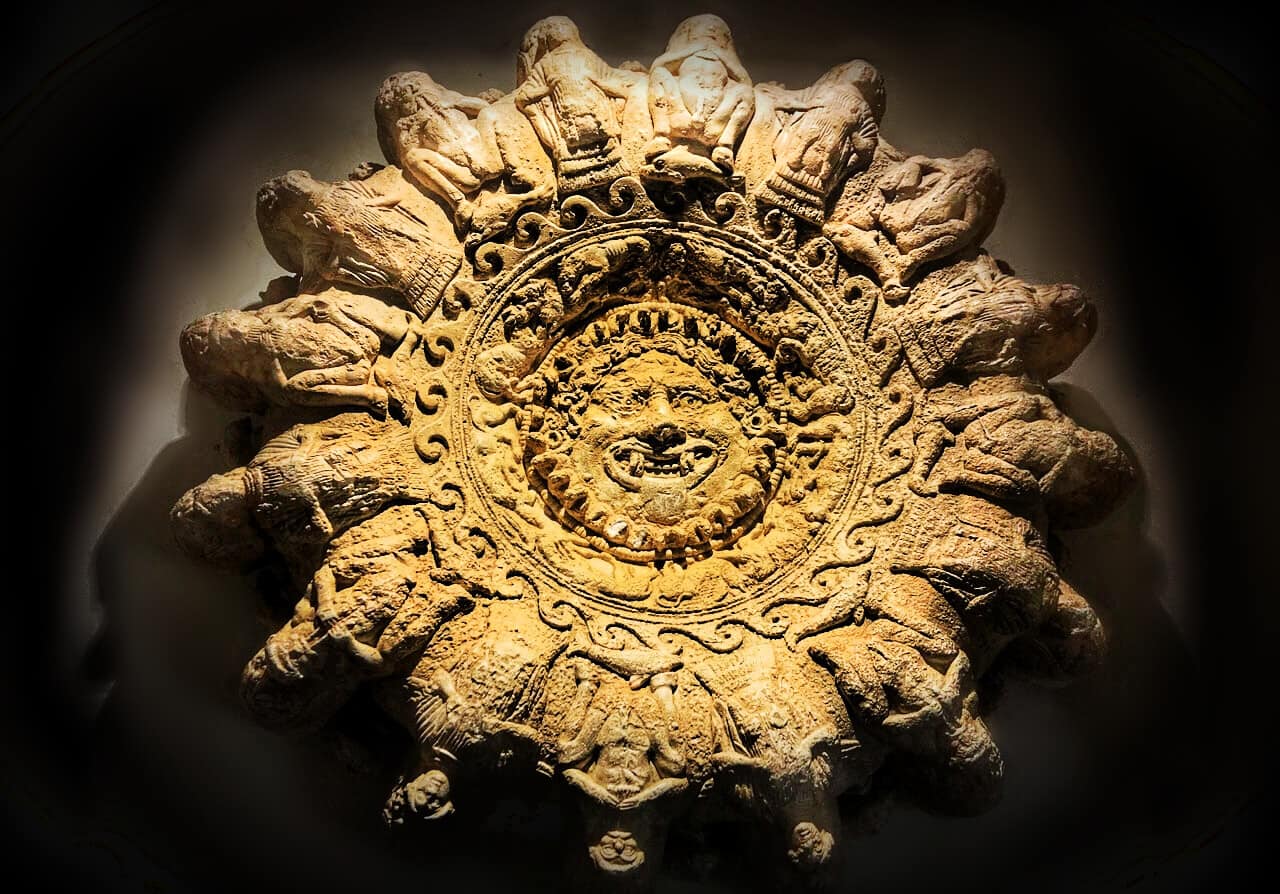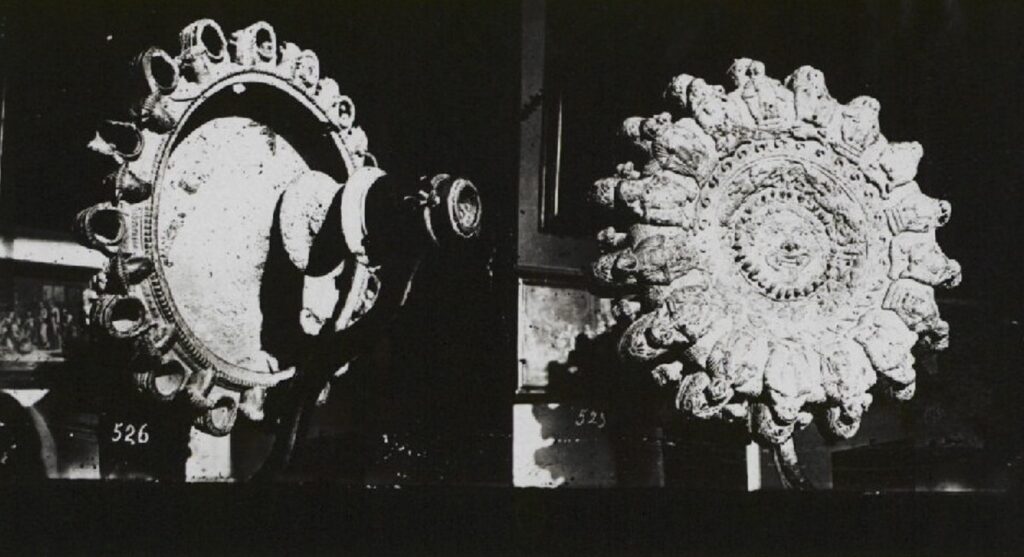A fascinating new study has called into question earlier theories regarding a remarkable bronze lamp found in Cortona, Italy. Discovered in 1840, this artifact has captivated researchers for its antiquity and intricate designs. Recent investigations led by PhD student Ronak Alburz and Associate Professor Gijs Willem Tol from the University of Melbourne provide fresh insights into the lamp’s origins and importance. Their research, published in Etruscan and Italic Studies, suggests that this item, which hails from the ancient Etruscan civilization, was not just a decorative piece but a significant cult object linked to the Dionysian mysteries.
The Uniqueness of This Lamp: Revealing Cult Connections
Weighing nearly 60 kilograms and spanning 60 centimeters in diameter, the bronze lamp has confounded experts for two primary reasons. Firstly, its rarity in Etruscan and Ancient Greek art makes it challenging to find comparable artifacts, complicating efforts to grasp its full significance. Secondly, the purpose of the lamp remains unclear due to a scarcity of contextual information, aside from a later inscribed bronze plaque.

The recent research by Alburz and Tol proposes a revolutionary reinterpretation of the lamp’s dating. Previously estimated to have been created around 300 BC, new evidence suggests it was actually crafted around 480 BC. More intriguingly, the researchers contend that the lamp illustrates Dionysus, the Greek god of wine, pleasure, and revelry, rather than Acheloos, the river god as previously assumed. They posit that the lamp captures the Dionysian thiasus, an ecstatic group associated with Dionysus, participating in a cultic performance.

Alburz speculates that this lamp may have served a role in Dionysian mystery rituals or celebrations. This perspective provides new understanding of ancient religious practices, enriching our comprehension of this captivating artifact from Archaic Etruria. “The lamp was likely an object tied to the mystery cult of Dionysus. Its decoration depicts the Dionysian thiasus, possibly engaged in a cultic performance celebrating Dionysus within the mysteries,” Alburz stated in a press release.
Dionysian Festivals and Their Symbolism

The Dionysian festivals, known as the Dionysia, were dedicated to honoring Dionysus and emphasized the significance of wine, pleasure, and merriment in ancient Greek society. The lamp’s elaborate design, featuring 16 figures with bull horns, has been reinterpreted to signify Dionysus instead of Acheloos. Dionysus is often shown with bull-like features, supporting the notion that these figures belong to his festive entourage.
Even with the lack of contextual data regarding the building or other related artifacts, Alburz and Tol’s findings offer a compelling new viewpoint on the lamp’s symbolism and function. Their thorough analysis of iconographic evidence alongside literary sources indicates that this lamp was more than just an ornamental piece; it was an important religious item linked to the Dionysian cult.
Etruscans: Archaic Etruria and Its Legacy
This lamp originates from the ancient Etruscan civilization, which thrived in Archaic Etruria—an area that corresponds to present-day Tuscany and parts of Umbria. The Etruscan civilization existed from approximately 900 BC to 27 BC and was structured into three primary city confederacies. As the Roman Republic expanded its reach, the Etruscan civilization was gradually integrated into Rome by the late 4th century BC.

The scarcity of similar objects in Etruscan and Ancient Greek art presents challenges in finding direct comparisons that could aid in interpreting the lamp’s design and symbolism. Etruscan lamp-making was a vital craft serving both practical and ceremonial purposes. While not as abundant as other forms of Etruscan art, various types of lamps have been uncovered, typically featuring a shallow bowl for oil, a central wick nozzle, and a handle for carrying or hanging. Decorative designs often included geometric patterns or mythological scenes.
Conclusion
The recent study by Alburz and Tol significantly alters our perception of the bronze lamp from Cortona, suggesting it served as an essential artifact linked to the Dionysian mystery cult rather than merely a decorative art piece. This reinterpretation deepens our understanding of ancient religious practices and highlights the complex and symbolic nature of Etruscan artifacts. As researchers continue to explore the enigmas of ancient civilizations, discoveries such as this lamp provide invaluable insights into the rituals and beliefs of past eras.

